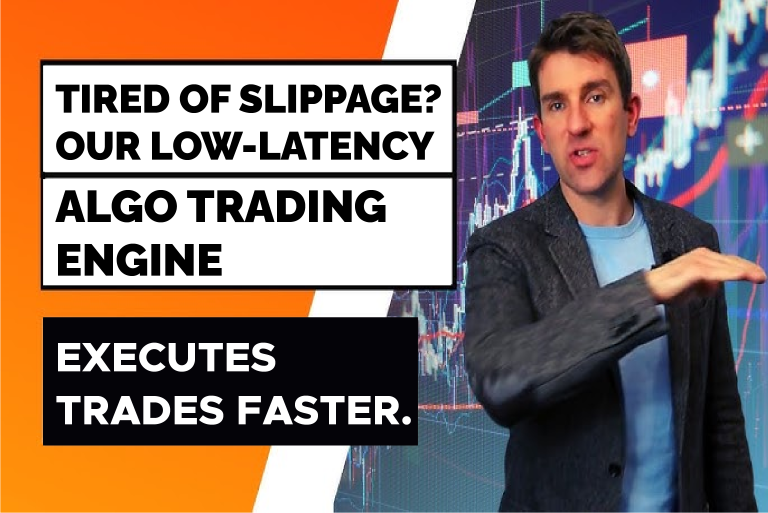Introduction: Understanding Slippage in Modern Trading
Slippage is one of the most frustrating experiences for any trader. It occurs when a trade is executed at a different price than expected, usually during high volatility or fast-moving markets. Even a small difference can significantly impact profits, especially for high-frequency traders.
In the era of algo trading and automated strategies, slippage is no longer just an annoyance—it’s a cost that can reduce the effectiveness of your trading system. Traders are constantly seeking ways to execute trades faster, minimize price deviations, and maintain competitive advantage.
This is where low-latency algo trading engines come into play. By combining advanced algorithms, high-speed connectivity, and real-time market data, these engines drastically reduce slippage and improve trade execution speed.
What Is Slippage and Why Does It Matter?
Definition of Slippage
Slippage is the difference between the expected price of a trade and the price at which it is actually executed.
Positive slippage: When you get a better price than expected.
Negative slippage: When you get a worse price than expected.
Even small slippage can accumulate over multiple trades, significantly affecting returns. In volatile markets, slippage can sometimes exceed 5–10 pips, which is unacceptable for professional algo traders.
Causes of Slippage
Market volatility – Rapid price changes lead to mismatches in order execution.
Order size – Large trades can move the market, causing slippage.
Latency – Delays in order transmission from your trading platform to the exchange.
Liquidity – Low liquidity stocks or assets have a higher chance of slippage.
How Low-Latency Algo Trading Reduces Slippage
A low-latency trading engine is designed to process orders and market data with minimal delay. Here’s how it works:
1. High-Speed Connectivity
Low-latency systems use direct market access (DMA) and colocated servers near exchange servers to reduce transmission time. This can shave milliseconds off every trade, which is crucial in high-frequency trading.
2. Optimized Algorithms
Sophisticated algorithms predict market movements, manage order placement, and adjust execution speed to minimize slippage.
3. Smart Order Routing
Orders are intelligently routed to exchanges with the best available prices and liquidity, ensuring trades execute as close to the expected price as possible.
4. Real-Time Market Data
Access to ultra-fast market data feeds allows the engine to react instantly to price changes, reducing the risk of negative slippage.
Benefits of Using a Low-Latency Algo Trading Engine
1. Faster Trade Execution
Every millisecond counts. By reducing latency, trades are executed faster, helping traders capture the intended price.
2. Lower Slippage
Low-latency systems reduce the gap between expected and actual execution prices, improving profitability.
3. Better Risk Management
Faster execution allows for precise stop-loss and take-profit orders, reducing unexpected losses.
4. Competitive Advantage
Professional traders can execute strategies that are impossible with slower, manual systems.
5. Scalability
High-speed algo engines can handle thousands of trades per second across multiple markets.
Key Features of Our Low-Latency Algo Trading Engine
Our platform is designed to cater to both professional and retail algo traders. Key features include:
Sub-millisecond execution speed – Ensures minimal slippage.
Multi-asset trading – Supports stocks, forex, crypto, and derivatives.
Customizable algorithms – Users can deploy their own strategies or use pre-built models.
High-frequency trading support – Ideal for scalping and arbitrage strategies.
Real-time risk monitoring – Prevents over-leveraging and unintended trades.
Integration with multiple brokers – Execute across accounts seamlessly.
Why Traders Experience Slippage in Traditional Systems
Even the best manual trading strategies are prone to slippage due to inherent system delays:
Broker processing delay – Some brokers batch orders, causing delays.
Internet speed limitations – Slow connections affect trade execution.
Platform inefficiency – Non-optimized trading platforms can’t keep up with fast-moving markets.
By contrast, a low-latency algo engine mitigates all of these issues.
Real-World Use Cases
1. Forex Scalping
Traders can scalp small profits multiple times per day. Low-latency execution ensures that these trades are executed at the exact price intended.
2. Arbitrage Trading
Exploiting price differences between exchanges requires near-instantaneous execution—perfect for low-latency engines.
3. High-Frequency Equity Trading
Buying and selling shares hundreds of times per day with precise timing reduces the chance of slippage.
4. Cryptocurrency Trading
Crypto markets are volatile and decentralized. Low-latency trading engines are crucial for capturing opportunities before prices shift.
Contact Us for Faster Execution
How to Choose the Right Low-Latency Algo Trading Engine
Execution speed – Sub-millisecond latency is ideal.
Broker compatibility – Must support multiple brokers or exchanges.
Algorithm flexibility – Should allow customization or integration of third-party strategies.
Data feed quality – Ultra-fast, real-time market data is critical.
Risk management features – Automated stop-loss, take-profit, and position sizing.
Common Misconceptions About Low-Latency Trading
Myth 1: Only Big Firms Need It
Truth: Retail traders using automated strategies also benefit from faster execution and reduced slippage.
Myth 2: Faster Trading Guarantees Profits
Truth: Low latency reduces slippage but strategy quality still matters.
Myth 3: It’s Too Technical
Truth: Modern engines come with easy-to-use dashboards and integrations.
Future Trends in Low-Latency Algo Trading
AI-optimized execution – Algorithms will predict liquidity and price moves.
Cloud-based low-latency systems – More accessible to retail traders.
Cross-asset integration – Execute trades in stocks, futures, crypto, and forex simultaneously.
Regulatory compliance automation – Engines will automatically enforce rules for global markets.
Conclusion
Slippage is a silent profit killer, especially in fast-moving markets. By leveraging a low-latency algo trading engine, traders can:
Execute trades faster.
Reduce slippage significantly.
Gain a competitive edge in forex, equities, crypto, and derivatives.
Whether you are a professional trader or a retail algo trader, minimizing execution delays is critical to maximizing profitability. Our low-latency trading engine ensures you stay ahead of the market with faster, smarter, and more reliable trade execution.
Let's Automate Growth
Rapid Algo Ai, India’s leading algorithmic trading and copy trading automation platform — empowering traders, investors, and institutions with fast, reliable, and intelligent trading solutions.
